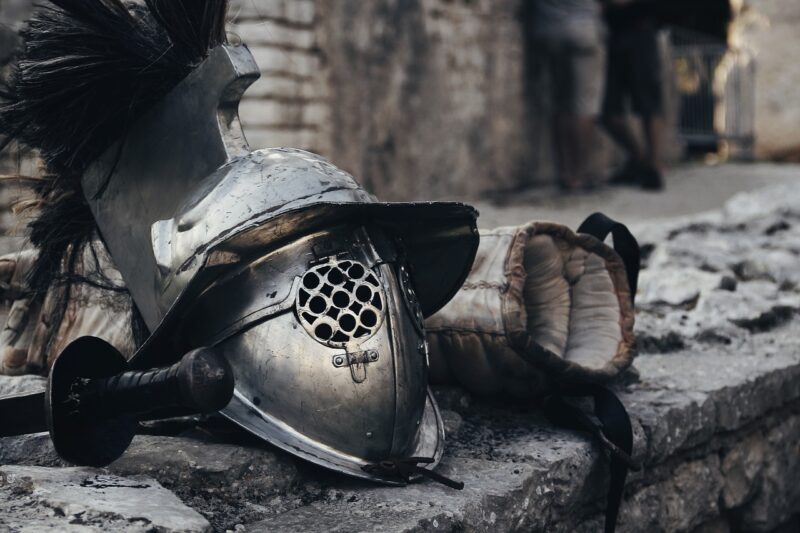
History often paints a vivid picture of the great male warriors—be they the Roman legions, the knights of the Middle Ages, or the gladiators of Ancient Greece. However, woven within this rich tapestry of valor and bravery are tales of formidable women warriors whose contributions and heroism remain largely unrecognized. From fierce Amazons to revolutionary leaders, women have played pivotal roles in warfare across various ancient civilizations, challenging the prevailing notions of gender roles and societal expectations.
1. The Amazons: Fierce and Fearless
The Amazons are perhaps the most iconic representation of women warriors in ancient lore. Known for their exceptional combat skills, these fierce women were depicted as living independently from men, often engaging in battles alongside or against their male counterparts. While myths surrounding the Amazons are varied, they predominantly hail from the Scythian tribes of the steppes above the Black Sea.
Historical accounts, such as those by Herodotus, describe Amazonian women as archers and horse riders extraordinaire. Far from being mere mythical figures, archaeological discoveries have revealed burial sites of women buried with weapons, reinforcing the notion that they led lives as skilled combatants. The legacy of the Amazons has influenced countless stories, portraying them as symbols of female strength and independence.
2. Women Warriors of the Celts
Celtic society valued bravery and prowess in warfare, regardless of gender. Historical warriors like Boudica, the queen of the Iceni tribe, launched a significant uprising against Roman rule in Britain around AD 60. Her fierce determination and cunning strategies rallied thousands to her cause, ultimately leading to a fierce rebellion that threatened Roman authority.
Boudica’s story, while often overshadowed by male historical figures, highlights the active participation of women in Celtic warfare. The Celts revered women who could fight, showcasing an understanding of strength that transcended masculine narratives. Arthurs’ tales and Celtic legends frequently reference female warriors—echoing a culture that empowered women to take up arms.
3. The Women of Ancient Rome: Gladiators and More
In Ancient Rome, gladiatorial games were a spectacle of violence and bravery, with both men and women participating. Although less common, female gladiators—known as “gladiatrices”—were an extraordinary aspect of Roman life. Records from the Roman Empire, such as inscriptions and mosaics, depict women fighting in arenas, displaying the same fighting spirit as their male counterparts.
The existence of these women shows that gladiatorial combat was not exclusive to males, challenging modern perceptions of gender roles within ancient martial practices. Further, women held essential roles even in the military structures—many served as healers, strategists, and supporters in logistical operations, significantly impacting wartime successes.
4. Mythological References and Historical Examples
Various myths and legends across cultures also spotlight formidable women warriors. From Hindu scriptures featuring the warrior goddess Durga to the legendary Mulan in Chinese folklore, these tales portray women as capable of extraordinary feats in battle. Historical accounts further confirm the existence of women in combat roles—individuals like Tomyris, the queen of the Massagetae, who famously defeated Cyrus the Great, exemplify the significant impact women had in warfare.
These examples challenge the long-standing idea that warfare is a masculine domain. The strong, fierce representations of women in these cultures inspired countless generations and redefined societal perceptions of female roles in history.
5. Women Warriors Across Various Civilizations
Women warriors were not confined to the legends of Ancient Greece or Rome; they existed worldwide. In Japan, the Onna-bugeisha, female samurai, were trained in martial arts and committed to defending their clans. Similarly, among the Zulu warriors of Africa, women played vital roles in tribal warfare, fighting alongside men to protect their communities.
In North America, Native American tribes like the Cherokee and the Apache had traditions of women taking up arms during conflicts. These diverse examples indicate that the phenomenon of women in combat is not isolated to one culture or region; it is a global occurrence, resonating throughout human history.
6. Why Women Warriors Matter Today
Recognizing the contributions of women warriors in ancient civilizations is crucial for several reasons. First, it reframes historical narratives that have predominantly focused on male achievements in warfare. Second, it celebrates diversity in contributions to societal developments. Finally, highlighting these stories empowers women today by illustrating that they have long been a critical component of history, capable of leadership and valor.
By understanding and honoring the legacy of women warriors, we can inspire future generations to challenge norms, fight for justice, and take on leadership roles, regardless of gender. Their stories remind us that strength, courage, and resilience are not confined by gender boundaries and that history is filled with examples of women who dared to defy the limitations imposed by their societies.
Conclusion
The narrative surrounding women warriors in ancient civilizations showcases the strength, bravery, and resilience that transcends gender. These stories deserve recognition and celebration, not only for their historical significance but also for their relevance in today’s fight for equality and empowerment. As we move forward, let us not forget the contributions of women throughout history, ensuring that their stories are told, celebrated, and cherished for generations to come.






